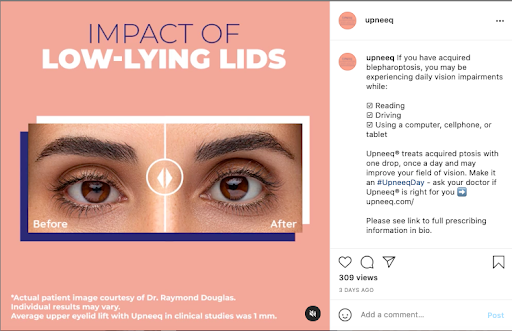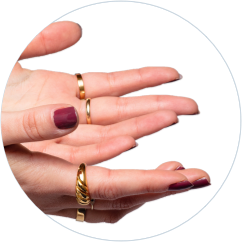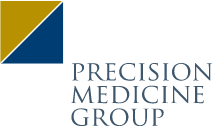Changing the standard of care through social media

“Status Quo = Not Me” reads Christian Rodgers’, one of PRECISIONeffect’s newest leaders, LinkedIn profile. And he couldn’t be more truthful.
For years, Christian has worked to bring healthcare and pharmaceutical brands into the digital fold through organic and paid social media. What was once considered “off limits” for brands in this sector is now a must-have thanks to him and his team’s smart, savvy and effective social strategies. Together, Christian and his team have created turn-key social programs for brands across niche industry segments that fuel awareness, education and adoption.
Today, he shares why every healthcare and pharmaceutical brand must leverage social media.
1. While much of the world has made the leap to social media at this point, healthcare still lags behind. How can social media benefit healthcare and pharmaceutical brands?
To me, one of the most compelling reasons for healthcare and pharma to adopt social media is simply for marketing efficiency. Social media has proven to be the most targeted option for matching brand messages with an intended audience. If you want to reach optometrists and the nurses who work on their staff, there’s a plethora of targeting options to help you do specifically, just that. We can’t say the same for most other media options, like an industry journal, for instance.
It’s also a great channel for not just awareness, but demand generation. We can pull users into the funnel in engaging ways that a traditional ad or commercial can’t always offer. For instance, we can serve potential patients through social advertising an interactive quiz that informs them whether a certain drug is right for them, then pushes them to a product page – all while staying compliant, to boot.
2. What are some other advantages to using social media that brands likely aren’t thinking about?
A key part of social media that’s often overlooked is the social aspect of it. When done right, social media can actually boost your brand’s reputation. You shouldn’t be engaging with users and comments solely when a crisis is at play; you should be building relationships with customers each day.
If you think of your social media channels as a storefront (which so few healthcare brands have), these channels are a great place to provide exceptional customer service and a great brand experience. You don’t want to wait until there’s a problem to speak with your customers, you want to warmly welcome them as soon as they “enter”. And, because it’s all online, you can create that positive experience with a simple click.
3. Social media can be overwhelming for many – it’s constantly evolving with new platforms populating everyday. Where should brands focus their efforts? Should they be on every platform? What platforms are unexpectedly effective for healthcare marketing?
Before anything else, brands should have an intention and focus with their social channels. For our clients, we create a comprehensive social media content guide prior to building their profiles. It’s essentially a focused version of what you see in a brand guidelines book, covering everything from content pillars and design, to deeper strategy such as how a brand manifests itself into social media content. I wouldn’t recommend posting off the cuff for any brand, but especially for brands in a nuanced and regulated space like healthcare.

Once you know what you want to say and how you want to say it, I’d recommend starting on Facebook and Instagram. Instagram is one platform that can be universally used by all brands because of its reach, targeting and high engagement rates. If you can nail the creative, you can be effective.
As for platforms to watch, TikTok is definitely one to monitor. While TikTok is rapidly rising in popularity, as of this time, it doesn’t have the ad targeting ability yet to rival other players. We’re closely monitoring the channel and best case uses for clients, but as of now, it’s a platform to consider if you’re looking to extend your campaign with HCP influencers.
4. Any marketing play will be ineffective if it doesn’t reach the right users. What strategies or tactics would you suggest for brands looking to reach patients and HCPs specifically on social media?
Beyond selecting the right targeting criteria, if you want to effectively reach and, more importantly, engage the right users, it’s all about the value proposition. You need to make sure that what you’re offering in social posts (organic and paid) offers value. When we create content for clients, we’re always asking:
- “Does this explain how it solves a problem or improves a situation?”
- “Does it demonstrate value, whether quantified or intangibly?”
- “How is it differentiated? Why should they consider us?”
If you can’t confidently say that your post checks all three boxes, then you need to go back to the drawing board.

Lastly, I’d say that winning messages, regardless of the end result, stop the scroll. That’s the battle we, as digital marketers, are tasked with overcoming. The creative element is just as important as the words you write. Upneeq, a prescription eye drop treatment, does a great job at this. Their content is beautifully branded and designed with their target audience in mind, all while delivering a compelling hook at the start of each post to stop the scroll.










